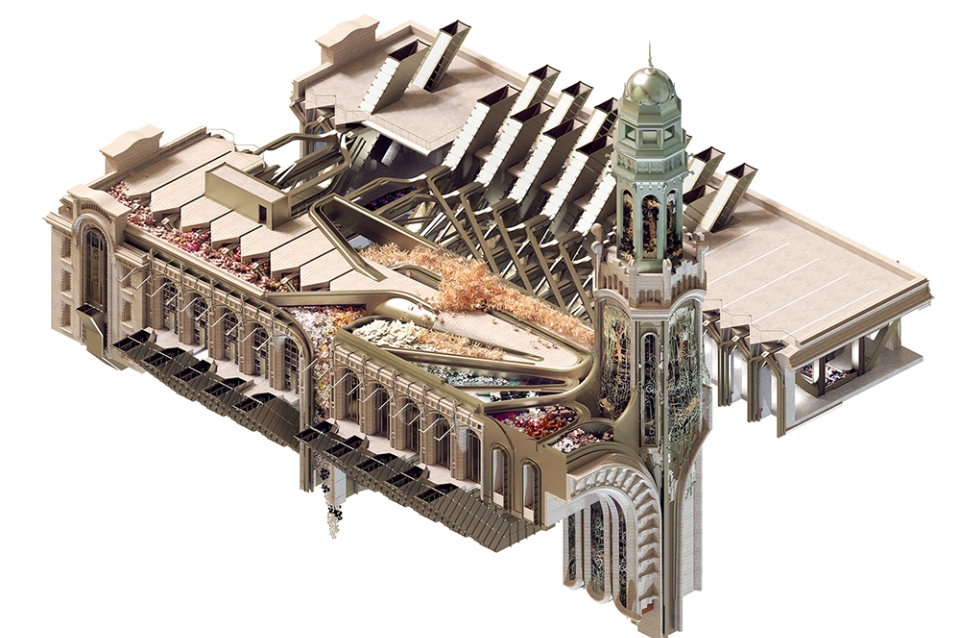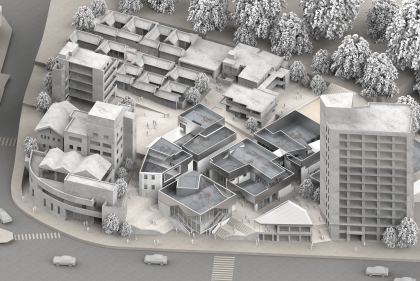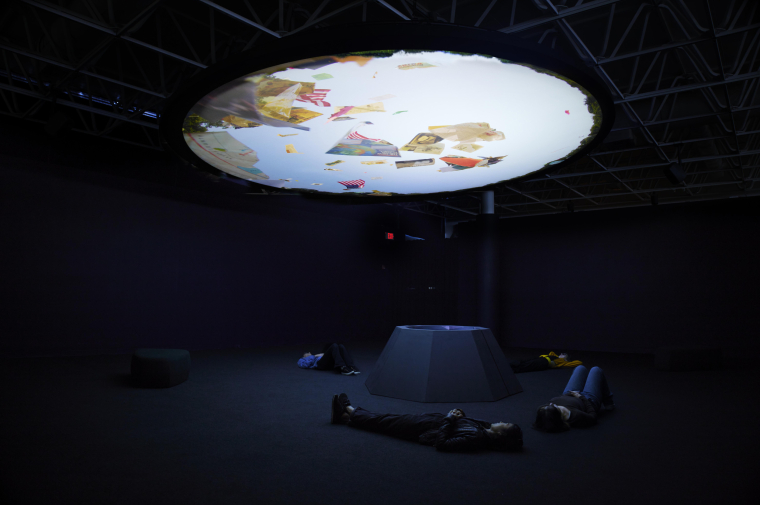February 10, 2021
The “Empty Architecture” of the COVID-19 City

Students Paul Germaine McCoy and Matthew Kohman redesigned the Trinity and United States Realty Buildings. Their project imagined the building as a space that would receive consumer items that are bought and then returned through online retail services like Amazon. Piles of discarded chairs take on a fur-like texture from a distance, McCoy says. “Design doesn’t always have to be this totally encapsulating thing, but rather something that infects the building, and then changes the way you look at it.” Credit: Paul Germaine McCoy, Matthew Kohman
Close
Students Paul Germaine McCoy and Matthew Kohman redesigned the Trinity and United States Realty Buildings. Their project imagined the building as a space that would receive consumer items that are bought and then returned through online retail services like Amazon. Piles of discarded chairs take on a fur-like texture from a distance, McCoy says. “Design doesn’t always have to be this totally encapsulating thing, but rather something that infects the building, and then changes the way you look at it.” Credit: Paul Germaine McCoy, Matthew Kohman
“An array of steel chutes disregards the preciousness of the existing stone articulation on the south facade, setting up multiple openings through which drones deliver the returned objects,” McCoy says in a video submitted alongside the design. The charge was to maintain some aspect of the existing building while reframing its purpose after the Financial District has been emptied. “We have to allow the residue of these events to have some renewal or redemption,” McCoy says. “How are we as a culture going to try again when we don’t have this reminder?” Credit: Paul Germaine McCoy, Matthew Kohman
Calli Katzelnick and Glenn Godfrey reimagined the American Stock Exchange building. Their design incorporated an existing “pit” where brokers worked as a pharmaceutical research lab. The lab draws samples from a large-scale aquarium and terrarium that are meant to grow wild, without human interference. “What happens when these buildings are no longer occupied? The nonhuman factor of the use of buildings was something that intrigued me,” Godfrey says. “The empty part of it makes you think: How can you refill this with something that’s not so anthropocentric? How can we serve a nonhuman force/” Credit: Calli Katzelnick, Glen Godfrey
Students selected objects associated with their buildings to guide the redesign. In the case of the American Stock Exchange, Katzelnick and Godfrey narrowed in on a series of pneumatic tubes that were used to transport materials through the building decades ago. “We wanted to use that as that connecting force in our building,” Katzelnick says. Credit: Calli Katzelnick, Glen Godfrey
“‘Empty Architecture’ may then become the ground zero for a different kind of city, one shedding its past ideologies and fully embracing the present with an eye toward the future,” Kolatan wrote on the syllabus. “The physical desertion and emptying out of buildings and streets echo the conceptual void created by the seemingly indestructible alliance of capital and technology with its various machinations.” Credit: Yang Yang, Yiding Wang

 View Slideshow
View Slideshow



